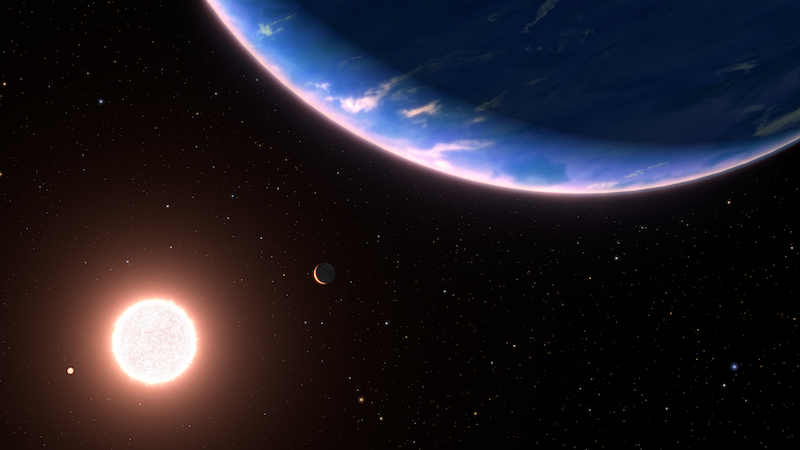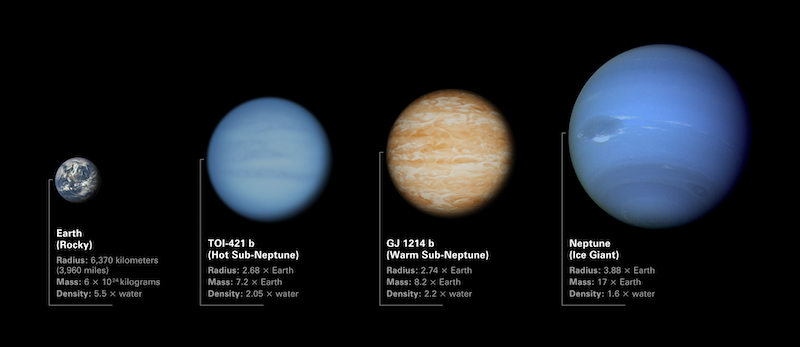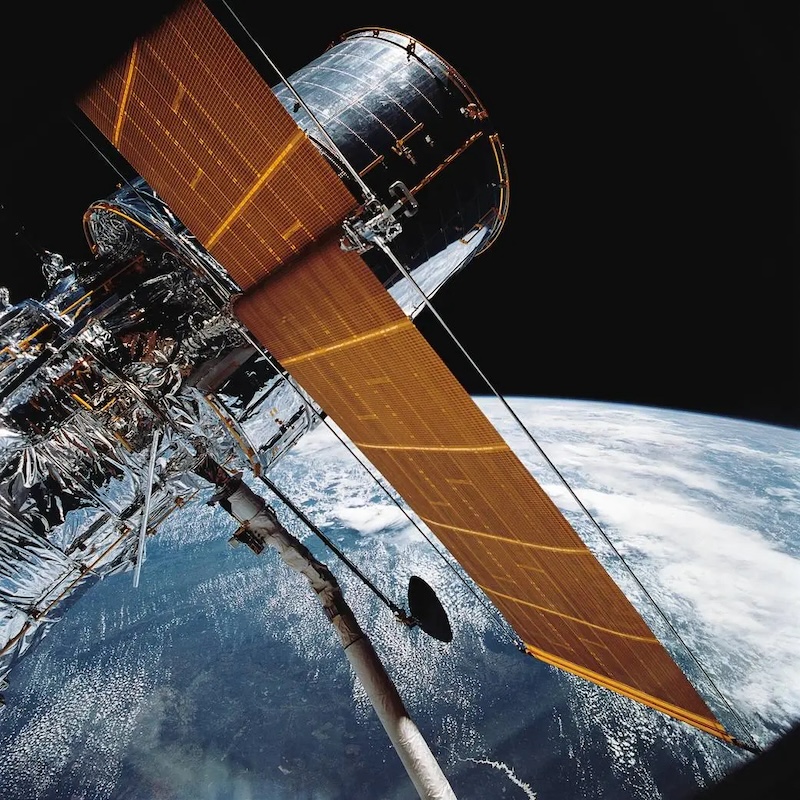
Smallest exoplanet yet with water vapor
Astronomers have previously found water vapor in the atmospheres of some larger gas giant exoplanets, orbiting distant suns. But, on January 25, 2024, they said they’ve found water vapor on the smallest exoplanet yet. GJ 9827d is only twice Earth’s diameter. It’s 97 light-years away in the direction of the constellation Pisces. Why do we care? Because we’re curious about the possibility of other Earths.
We know GJ 9827 d itself isn’t habitable. It’s inhospitable for life as we know it. It’s a searing hot world, with surface temperatures of about 800 degrees Fahrenheit (430 C). That’s about as hot as as the planet Venus in our solar system. It’s hot enough to melt lead!
The researchers first published their peer-reviewed paper in The Astrophysical Journal Letters on September 12, 2023.
They said the discovery might mean that smaller worlds with water are common.
Hot, steamy exoplanet has water vapor in its atmosphere
The mighty planet-hunting Kepler space telescope discovered GJ 9827 d in 2017. This world orbits its red dwarf star in only 6.2 days. And it’s now the smallest exoplanet where water vapor has been found in its atmosphere. One of the study’s lead authors, Björn Benneke at the Trottier Institute for Research on Exoplanets at the University of Montreal in Canada, said:
This would be the first time that we can directly show through an atmospheric detection that these planets with water-rich atmospheres can actually exist around other stars. This is an important step toward determining the prevalence and diversity of atmospheres on rocky planets.
The discovery is also another step toward finding rocky exoplanets that have water on their surfaces. As co-principal investigator Laura Kreidberg at the Max Planck Institute for Astronomy in Heidelberg, Germany, added:
Water on a planet this small is a landmark discovery. It pushes closer than ever to characterizing truly Earth-like worlds.
Hubble observed GJ 9827 d during 11 transits over three years. That is when the planet crossed in front of its star, as viewed from Earth. We don’t know yet if the planet has clouds in its atmosphere. But if there are any, they must be fairly low in altitude. Otherwise, they would block Hubble’s view of the atmosphere itself.

Rich water vapor world or mini-Neptune?
In the case of GJ 9827 d, there are still a lot of questions, however. Even with the new Hubble results, scientists aren’t sure if the small exoplanet has a steamy atmosphere of mostly water vapor, or a hydrogen atmosphere with just a little water vapor. If it’s the latter, then it would be like a mini-Neptune than a rocky Earth-type world. Lead author Pierre-Alexis Roy at the University of Montreal said that either way, it is an exciting finding for astronomers:
Our observing program, led by principal investigator Ian Crossfield of Kansas University in Lawrence, Kansas, was designed specifically with the goal to not only detect the molecules in the planet’s atmosphere, but to actually look specifically for water vapor. Either result would be exciting, whether water vapor is dominant or just a tiny species in a hydrogen-dominant atmosphere.
Notably, between the two scenarios, the researchers say that the water world one is probably the most likely. The paper said:
Given that recent studies have inferred an important mass-loss rate (>0.5 M. Gyr^1) for GJ 9827 d, making it unlikely to retain a H-dominated envelope, our findings highlight GJ 9827 d as a promising water world candidate that could host a volatile-dominated atmosphere.
A warmer version of Europa?
If the planet is rocky, then it could be like a warmer version of Jupiter’s moon Europa, the researchers said. Benneke said:
The planet GJ 9827 d could be half water, half rock. And there would be a lot of water vapor on top of some smaller rocky body.
If so, then the planet probably originally first formed farther away from its star. Water would have been in the form of ice. GJ 9827 d then migrated closer inward, to where it is now. In this scenario, most or all of the hydrogen would have burned off. This would leave a primarily steamy water vapor atmosphere.

Clues about other small exoplanets
The observations provide important clues about smaller exoplanets. And NASA’s Webb space telescope can analyze some of their atmospheres in greater detail than Hubble can. Thomas Greene at NASA’s Ames Research Center in California said:
Observing water is a gateway to finding other things. This Hubble discovery opens the door to future study of these types of planets by the James Webb Space Telescope. JWST can see much more with additional infrared observations, including carbon-bearing molecules like carbon monoxide, carbon dioxide, and methane. Once we get a total inventory of a planet’s elements, we can compare those to the star it orbits and understand how it was formed.
Even just being able to detect atmospheres at all on such small planets is a breakthrough. Benneke added:
Until now, we had not been able to directly detect the atmosphere of such a small planet. And we’re slowly getting in this regime now. At some point, as we study smaller planets, there must be a transition where there’s no more hydrogen on these small worlds, and they have atmospheres more like Venus (which is dominated by carbon dioxide).
The debate of water world or mini-Neptune is reminiscent of another one involving exoplanet LHS 1140 b, which also is likely either a water world (but with oceans) or a mini-Neptune. It is only 50 light-years from Earth.
Bottom line: Astronomers have found the smallest exoplanet yet with water vapor. GJ 9827 d is a hot steamy world. But is it rocky like Earth or a mini-Neptune?
Source: Water Absorption in the Transmission Spectrum of the Water World Candidate GJ 9827 d
Read more: Is this nearby exoplanet a water world? Or a mini-Neptune?
Read more: Nearby exoplanet is Earth twin, but hot as a pizza oven











